Quebec is staking its claim as a key player in North America’s life sciences sector. Home to more than 750 companies and 39,000 professionals, the French-speaking Canadian province wants to step out of the shadow of traditional powerhouses like Boston and California. This ambition was on full display at Effervescence 2025, a flagship event held last week in Montreal and organized by economic development agency Montréal InVivo. Government officials, researchers, and entrepreneurs made a clear case: Quebec is ready—and mobilized—for global impact.
A Booming Sector with Strategic Ambition
At the Effervescence 2025 forum in Montreal last weeek, Quebec’s Minister of Economy, Innovation, and Energy, Christine Fréchette, highlighted that
“The global life sciences market—valued at “$3.4 billion CAD (€2.31 billion)—is growing at 8% annually (2024-2031)”.
And Quebec fully intends to claim its share.
“The science, technology, and health sector is nearly as important as aerospace. That’s something I don’t think is widely recognized. We hear far more about aerospace than we do about science, technology, and health.”
The French-speaking province is therefore actively working toward that goal. Quebec has been successful in attracting major investments and transformative projects, including the establishment of Moderna’s vaccine manufacturing facility in Laval and the expansion of Jubilant HollisterStier.
“In 2024 alone, five major life sciences projects brought in nearly $422 million CAD in foreign direct investment. Since the pandemic, the sector has ranked among the top three foreign investment targets in Greater Montreal.”
What’s Quebec’s edge? A robust research ecosystem and talent pool, said Stéphanie Doyle, Montréal InVivo’s CEO:
“In life sciences and health tech, talent makes all the difference. Quebec has cultivated a unique expertise supported by a dense network of universities and research centers.”
Minister Fréchette also underlined Quebec’s stability—an attractive asset in today’s unpredictable geopolitical climate:
“Investors are looking for reliability. Amid the turmoil in the U.S., Quebec offers a stable, secure, high-quality environment—factors that are too often taken for granted.”
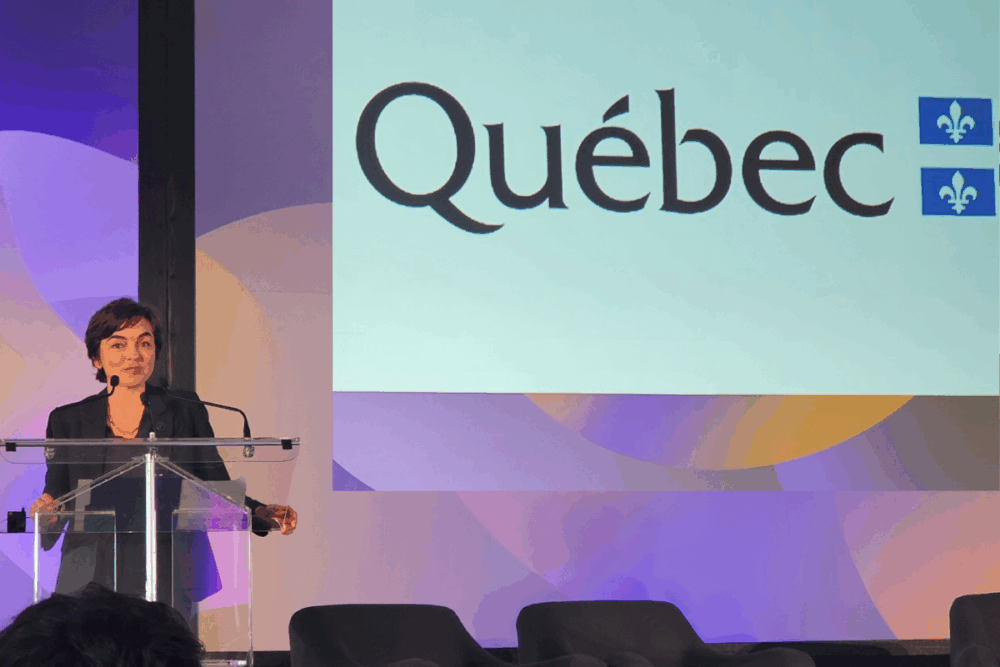
Challenges That Could Become Catalysts
Slow Commercialization
Despite the momentum, Quebec faces structural hurdles: talent shortages, supply chain vulnerability, and a slow path to commercialization. While Quebec excels at securing patents, bringing innovations to market is another story.
According to Carl Julien, Senior Strategic Leader, Health Organization Development at Innovative Medicines Canada,
“Only 20% of global innovations reach patients here in Quebec. It takes over 730 days for new treatments to be adopted into hospital protocols. That’s a huge handicap when patents only last a few years.”
This lag hampers not only public health but also investor confidence and local startup growth. Ontario, a Canadian’s English-speaking province, has already taken steps to address this challenge by making pharmaceutical products available to its population much more rapidly. In Quebec, however, faster integration of innovation into the healthcare system remains a key issue.
Frédéric Dubé, Director of Government Affairs and Market Access, bioMérieux Canada advocates a proactive approach:
“Try, adapt, adopt. We need to find ways to integrate innovation more quickly. For example, we’ve developed a diagnostic test that can detect 15 respiratory infectious disease targets in just 15 minutes. Imagine if it were to hit the market soon. It could be used outside traditional laboratories — in local health centers, senior care facilities, or emergency rooms for fast triage.”
Tariffs
Tariffs are also a challenge but they could turn into an opportunity. For Michel Bouvier, Professor at the Institute for Research in Immunology and Cancer at the University of Montreal, recent U.S. policy shifts are having a real impact on research.
“Research grants once available to Canadian and Quebec scientists have been suspended overnight following decisions by the U.S. government. I personally had a DARPA grant scheduled to start on March 1st, and we still don’t know if it will come through. This will significantly affect our research capacity.”
Yet Michel sees a silver lining:
“This also opens new doors, because our American colleagues are facing the same disruptions. The U.S. partner I was working with just lost a million dollars in funding overnight. So, understandably, these researchers are beginning to question whether their future really lies in the United States. As they say, never waste a good crisis—there may be a window to bring back some of those Canadian and Quebec scientists who built careers in the U.S. and who might now consider coming home.”
And to do so, it is necessary to strengthen investments. The University of Montreal, for example, is aiming to raise $25 million CAD (€17 million) to attract researchers.
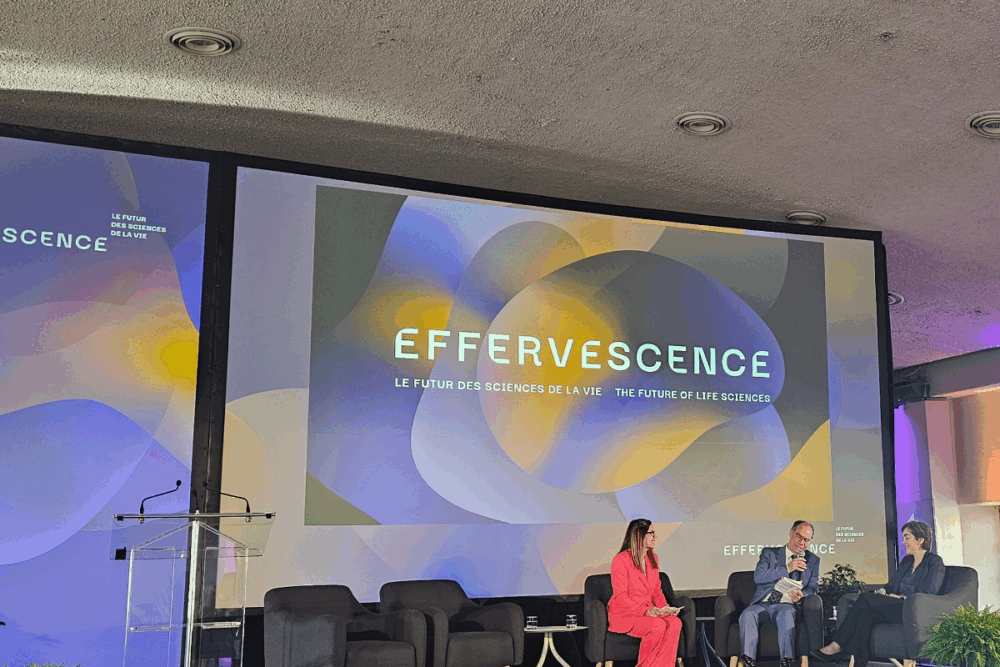
A Call to Reinforce Quebec Inc.
To tackle these challenges, Quebec launched a $200 million strategy (2022–2025) dedicated to life sciences, with an additional $54 million committed through 2028. The goal: boost local autonomy in production, innovation, and talent retention, Minister Frechette declared:
“The more we ‘Quebecize’ our supply chains, the stronger and more resilient we’ll be.”
To attract talent and investment, Quebec’s ecosystem is mobilized and demonstrates exemplary coordination. We met with cutting-edge companies and high-performing research institutes destined to be showcases for the sector.
MILA – Quebec’s World-Class AI Hub
One key pillar of Quebec’s AI ecosystem is MILA (Quebec Artificial Intelligence Institute), a globally recognized research center specializing in artificial intelligence, particularly in applications related to life sciences. Established in the 1990s with strong support from both the public and private sectors, MILA represents a major investment in positioning Quebec as a leader in AI—and that investment is now paying off.
As Stéphane Letourneau, Executive Vice President at MILA, explains:
“MILA is a place where you can receive advanced training or discover opportunities—whether in cutting-edge research labs or in the many innovative companies we collaborate with. It’s not just a research center; it’s also a platform for engagement and a bridge between academia and industry.”
In 2019, a comparative analysis by fDi Benchmark from the Financial Times ranked Montréal number 1 in North America for the quality of its AI industry, outperforming major hubs like San Francisco and New York in terms of competitiveness for AI investments.
But beyond technical research, MILA also plays a critical role in shaping the ethical landscape of AI. As the global AI race intensifies, MILA hopes to attract top talent, including from the United States, by emphasizing ethical AI development—a field that is expected to grow significantly in the coming years.
“Canada’s strong reputation for developing responsible AI is a major asset. It doesn’t just support trust—it also helps with the commercial adoption of AI technologies,” says Letourneau.
He believes Canada’s commitment to responsible AI could give Quebec a soft power advantage in global markets.
Innovative Quebec Companies
Quebec is also home to a wealth of innovative and highly promising companies. We met with several that show great potential—developing next-generation vaccines and new devices to observe the eye or track knee movement.
Aramis Biotechnologies: Developing Vegan Vaccines Against Flu
Aramis Biotechnologies, a Canadian startup based in Quebec City, is pioneering a new, sustainable approach to vaccine production using plants instead of traditional animal-based systems. The company uses Nicotiana benthamiana, a wild tobacco relative, to create virus-like particles (VLPs) that mimic pathogens and trigger immune responses without causing infection.
Vaccines can be manufactured in as little as 20 days—comparable to mRNA platforms—but rely on protein-based technology with a much longer record of clinical safety. Because no animal products or live viruses are involved, the process is vegan-friendly and drastically reduces the carbon footprint compared to conventional methods.
Aramis is currently developing a seasonal flu vaccine, with plans for commercialization by 2030, and sees broader applications in personalized medicine, veterinary health, cultured meat, and even drought-resistant agriculture.
As CEO Frédéric Ors puts it (read our full interview here):
“Plants are the most protein-productive organisms on Earth. You don’t need massive land areas or thousands of chickens. A single vertical farm can produce huge volumes.”
Recognizing the importance of this technology, the Canadian government has committed $40 million through the Strategic Innovation Fund to support Aramis’s $80 million initiative to establish domestic vaccine manufacturing capacity and improve pandemic preparedness.
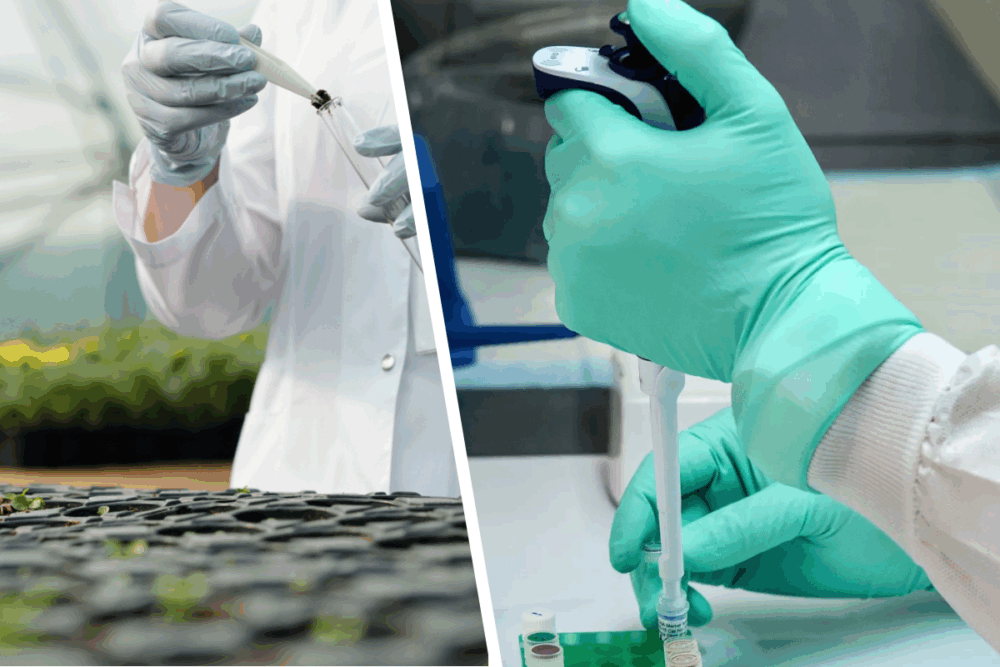
Zilia: Using Light in the Eye to Predict Disease
Zilia, a Quebec-based startup founded by optometrist Patrick Sauvageau and biochemical engineer Dominic Sauvageau, is revolutionizing early disease detection through the eye. Their flagship device, Zilia Ocular, uses light-based spectroscopy and artificial intelligence to non-invasively detect biomarkers, particularly oxygen saturation, in the retina. This breakthrough technology is designed to help clinicians and researchers better understand, detect, and manage ocular diseases such as glaucoma and diabetic retinopathy.
In an interview, Dario Zujo, Director of Business Development at Zilia, told us:
“The issue with current diagnostic tools is that they rely on detecting structural damage. But by the time that damage appears, it’s often too late; it’s irreversible. Our premise is that functional biomarkers, like oxygen saturation, begin to deviate years earlier. So even when the images appear perfectly normal, underlying oxygenation imbalances could already be present.”
Their technology is also being explored for its potential applications in neurology and cardiology, including research into conditions such as Parkinson’s, and cardiovascular disease.
The company also announced yesterday the closing of a bridge financing round. This round attracted new investors, including Linearis Ventures. This signals a growing interest in Zilia’s innovative approach to precision diagnostics.
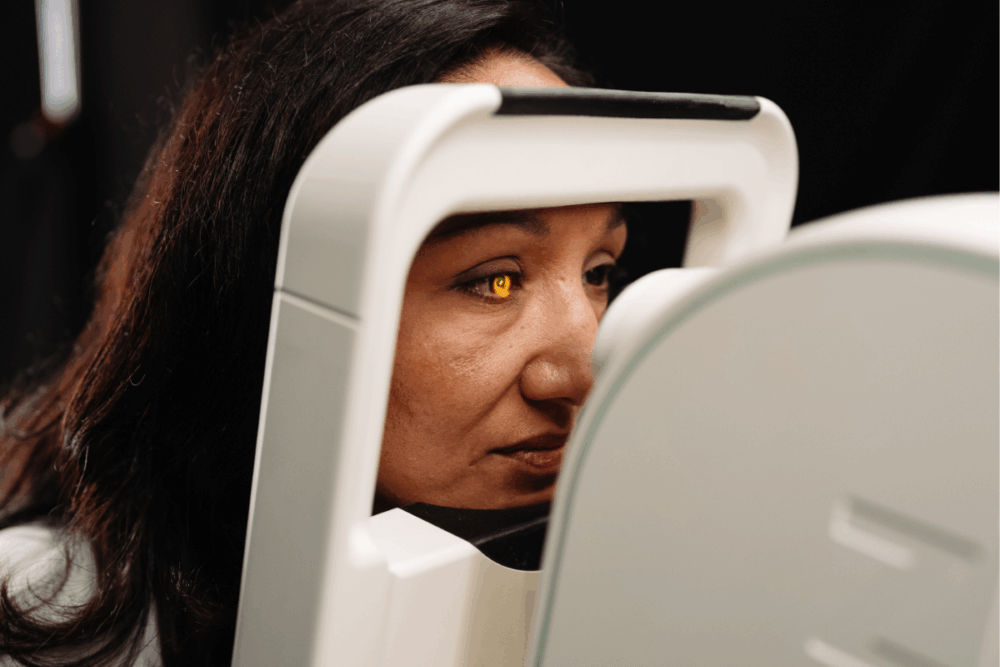
Emovi: Innovating Knee Pain Management with KneeKG Technology
Emovi, a Montreal-based medtech company, has developed the KneeKG system to transform the assessment and management of knee pathologies. Utilizing advanced biomechanics research and artificial intelligence, KneeKG provides a dynamic, real-time analysis of knee joint function during walking, offering a clear picture of how the knee behaves in motion, unlike static imaging methods such as X-rays or MRIs.
According to Alex Fuentes, Chief Scientific and Technology Officer at Emovi;
“Doctors don’t want to treat just an image, but a patient. They want to understand function. We focus on identifying, at the individual patient level, abnormal movements or functional issues in the knee. This allows us to better understand how those irregularities relate to symptoms—because symptoms typically appear during movement. This is important because it means we can address issues without always resorting to surgery. If a patient has a functional deficit and surgery is the only option being offered, that might not be the most appropriate solution.”
This technology is designed for use in clinical settings, from orthopedic surgeries to post-operative rehabilitation, and even sports medicine. With its ability to predict surgical outcomes, aid in implant selection, and reduce wait times for patients, KneeKG represents a cost-effective solution that can also ease the burden on healthcare systems. The system is FDA, Health Canada, and CE approved, and is already being used in multiple countries.
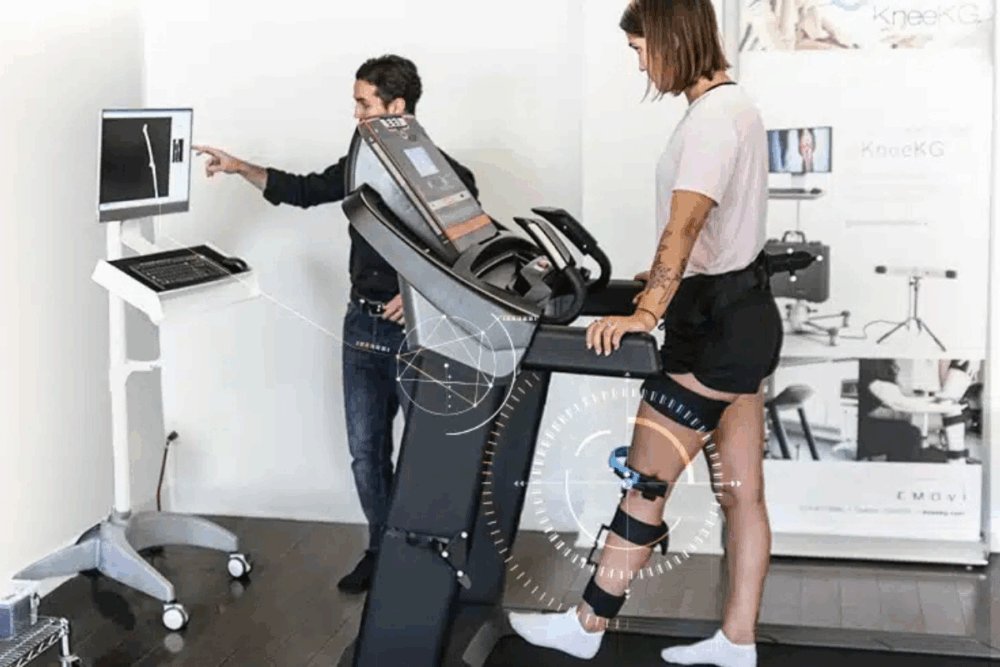
Balancing Ambition and Vigilance
Quebec is determined to prove it has the talent, infrastructure, and strategic vision to become a global leader in innovative healthcare. Yet, in the current international context—particularly with the current anti-science environment in the United States—attracting top American talent remains a serious challenge. The competition is high. Just this week, the French President Emmanuel Macron launched the “Choose Europe for Science” initiative with a € 500 million plan aimed at drawing U.S. researchers to continue their work in Europe, particularly in France.
Building a truly autonomous, resilient, and equitable life sciences ecosystem in Quebec will therefore require collective effort, ongoing adaptability, and sustained political support. This was the clear message echoed by key stakeholders during the Effervescence Forum in Montreal.
As Frédéric from bioMérieux put it:
“We’d love for the media to start saying, ‘Oh right, Quebec isn’t just about batteries and aerospace—there’s also a strong and thriving life sciences industry here.’”
Interested in Canada? Explore our other stories and infographics on the country’s industrial and economic landscape.
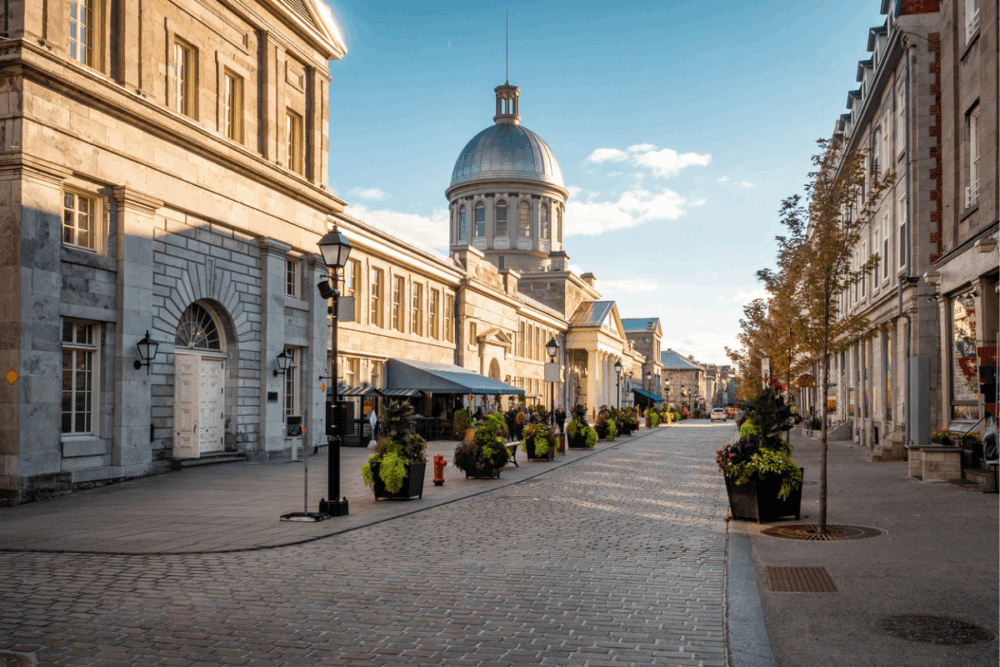




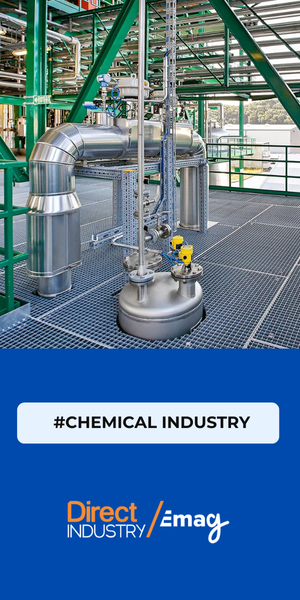
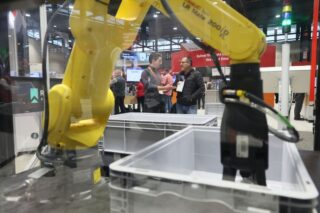
![Image [Buying Guide] How to Choose the Right AMR?](/wp-content/uploads/sites/3/AMR-320x213.jpg)



